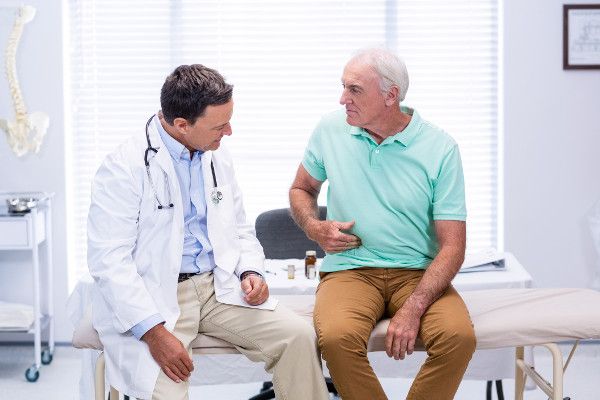How to Find a Good Chiropractor for Effective Pain Relief
You’ve been thinking about your decision for a while. Your friends and coworkers have recommended it, but your spouse isn’t a big fan of chiropractors, so you’ve been hoping that your pain will disappear on its own. You’re tired of taking the medication, and you even tried an injection, which didn’t help for long.
The orthopedist is talking surgery, and you definitely want to avoid surgery. Now, you’ve made the decision: You’re going to figure out how to find the best chiropractor!
Maybe you have questions: “How do I find a good one? Can I figure out how to find a chiropractor that takes my insurance? Do they take Medicare? Has the chiropractor treated my condition before? With what kind of success? What post-graduate training has the chiropractor had? Can the chiropractor get to the underlying cause of my condition? Has this chiropractor treated athletes in the past?”
Here’s a guide to answering those questions and finding a quality chiropractic professional in your area.
Finding a Chiropractor Near Me
Asking your primary care physician or orthopedist for recommendations regarding credible, competent chiropractors is the best place to start. One way to phrase this question is: “If someone in your family needed a chiropractor, whom would you recommend?”
Asking friends, coworkers and neighbors for recommendations also helps. Exercise caution insofar as one person’s definition of the best chiropractor may differ from another person’s definition. While recommendations can be valuable, find a chiropractor who can meet an individual’s specific needs is paramount.
Major chiropractic associations, including the American Chiropractic Association, Illinois Chiropractic Society, Cox Technic and American Chiropractic Board of Sports Physicians, maintain listings of board-certified chiropractors. You can find Dr. Anthony R. Galante’s name on all four sites.
After you receive referrals from physicians, family or friends, the most common ways to find a local chiropractor are twofold: You can obtain a list of providers from your insurance company, or you can just use Google. Many use a combination of these two. Finding a chiropractor close to home makes it easy to go when you’re in pain.

In general, chiropractors offer excellent services and have a high patient satisfaction rate, so most chiropractors will have good reviews.
Negative reviews are often written by disgruntled people who may not understand how the process works, especially regarding their insurance. There’s an old saying about doctors: “Most of my patients like me, but the rest still owe me money!”
Every business has negative reviews, but the positive should significantly outnumber the negative. How many reviews does the chiropractor have? 1 or 2? 10-15? 30-40? 80-90? How many are 5-star?
Algonquin Chiropractic has over 135 mostly 5-star reviews on Healthgrades, over 135 mostly 5-star reviews on both of our Google pages, and over 57 5-star reviews on Facebook. Over 320 positive reviews are online, so thank you to our patients for taking the time to leave those reviews!
Look over the reviews—do any resonate with you or relate to you and your condition? You will see some reviews that talk about specific conditions such as low back pain, herniated disc, ruptured disc, sciatic nerve pain, bulging disc, neck pain, arm pain or numbness and even reviews about treatment for car accident or workplace injuries.
At the doctor’s website, you can try to pick up on practice philosophy, the conditions they treat, the treatments they use, post-graduate training, their location and hours, etc. Once you decide on a chiropractor, their websites may allow you to schedule an appointment online and/or download the intake forms.
Making the Appointment
Scheduling an appointment is only a matter of a brief phone call. Our friendly staff will answer, inquire as to what type of condition from which you’re suffering, find a mutually convenient day and time, record your insurance information and make sure you know how to get to our office. We’ll also email you our HHI (Health History Intake) Form, which you can complete at home and email back to us.
Your First Visit
Once you make your appointment, get ready for your first visit. Have all your medical information ready when you go. This includes:
- Previous imaging tests (MRIs and X-rays)
- Dosage for any medications
- Treatment plans or physical therapy you’ve completed
- Records and tests from previous providers

During the initial consultation with the doctor, we will ask questions about your current condition, such as:
- On a scale from 1 to 10, how bad is your pain?
- What caused your condition?
- Have you had this condition in the past?
- What makes the pain worse?
- What makes the pain better
- What doctors have you already seen, and did they help?
We’ll then gather a complete medical history that includes not only your current status but also any previous injuries or underlying medical conditions. Once we gather your history, we’ll perform a physical exam. The exam will consist of the following:
- postural examination, which includes a foot alignment evaluation
- range of motion testing
- sensory testing
- reflex testing
- muscle strength testing
- orthopedic testing
- leg length evaluation
- palpatory examination
If you’ve never had imaging, if it’s out of date, or your condition has changed since your last MRI or X-ray was taken, we may order additional imaging.
We will review your history, exam findings, and any imaging, and come up with a treatment plan if we can help you.
Your Second Visit
This is your day to find out what is wrong and if we can help. When you begin that search for a chiropractor near you, whether you realize it or not, you want to answer four questions:
- What’s wrong with me?
- Can you help me?
- What do we need to do to correct the problem?
- What are the associated costs?
We’ll answer all those questions on your second day. Why the second day? First we need to thoroughly review your consultation, your exam findings, and your imaging. We also may request tests and records from previous providers.
We will go over your X-ray and/or MRI findings, your pertinent exam findings, your diagnosis, your specific, individualized treatment plan, as well as your insurance benefits and your associated costs before you start treatment.
First Treatment
As a new chiropractic patient, you may be wondering how you’ll feel after your first treatment. Many people are anxious before they come in because they associate chiropractic treatments with old-school, painful cracking techniques. While we do offer the old-fashioned and effective, popping techniques if that’s what you prefer, we also have numerous highly effective “non-crack” methods. Whatever method we start with, our first goal is always the same: Let’s not make it worse! The first treatment is very gentle as our primary goal is to do no harm.
Will It Hurt?
Because the healing process affects each person differently, there’s no definitive way to know for sure how you’ll react or how your body will respond to your first treatment. That is why we do “tolerance testing.” Using the Cox Technic, we can actually test the procedure on your back and neck to ensure it doesn’t increase the pain.
Published studies show the Cox Technic causes an increase in pain less than 1% of the time! After you pass tolerance testing, only then do we proceed with treatment.
When Will I Feel Better?
Don’t worry about pain! We perform tolerance testing first to make sure you can handle your treatment.
A lot of people feel relief after their first visit. It certainly isn’t going to be perfect, but most people notice a decrease in their symptoms, at least for a short period of time. The first few weeks of treatment are characterized by ups and downs. People have good days and bad days until the inflammation subsides and the spine starts to stabilize. Then, we start seeing more good days than bad days, the good days get better, and the bad days aren’t as bad. Generally, we look for a 50% subjective and objective improvement in the first 2-4 weeks of care.
What If the Condition Isn’t Improving?
If you don’t reach the initial goal of 50% improvement in the first four weeks, we may order an MRI, consult with your primary, consult with our Orthopedic Surgeon, or consult with our pain management doctor. A combination of medications and injections with our chiropractic treatment can bring about relief in cases that don’t respond quickly. In the majority of cases, we do not have to order an MRI or consult with other physicians.
What About Work, Exercise or Golf?
Our goal is to get you back to work and your normal lifestyle as soon as possible. First, we start with gentle, pain-relieving exercises to reduce pain and inflammation. When you’re ready, we’ll progress to specific stabilization exercises and eventually progress to full-body core exercises.
During this transition time, people can usually do low-impact cardio exercise like walking on the treadmill, elliptical or stationary bike. The best exercise for low back pain is probably swimming.
As for work, a lot is written and it can get very complicated, especially if you have a worker’s comp claim. We want you back to work as soon as possible for a lot of reasons—physical, mental, and, of course, financial. To make it simple, if the person can perform the tasks of the job without the risk of further damage to the condition being treated, then we can go back to work at full duty. If not, they may require a longer period off of work or will have to go back with restrictions or light duty.
People ask their doctors, “What can I do?” Doctors say, “Do it if it doesn’t hurt.” It sounds like an over-simplified answer, but research has shown that the more you can do when you have back pain, without hurting it, the better. As a general rule for back pain, what doesn’t hurt you helps you.
How Chiropractors Help with Sciatica
Too common for doctors to consider it a disease, sciatica is a set of symptoms that affects pediatric and geriatric patients alike, though most patients’ ages range from 30 to 50. Sciatica includes all irritation of the sciatic nerve that connects the lower back to the lower limbs, so patients can experience symptoms anywhere from their hips to the tips of their toes. Whether a disc herniation or spinal stenosis is responsible for your condition, chiropractors can employ the Cox Technic among other techniques to relieve enough pain for you to return to your favorite physical activities.
How Chiropractors Help with Peripheral Neuropathy
Patients often mistake peripheral neuropathy for sciatica. Caused by a loss of blood flow, peripheral neuropathy is a deterioration of nerves in the peripheral limbs, usually starting in the feet or toes. Upon losing their blood supply, nerves will deteriorate.
The nerves’ axons, which are responsible for sending the right signals from the limb to the brain, can sustain damage potent enough to disrupt these signals, causing numbness and pain. Our treatment heals damaged nerves by increasing blood flow to them, which ultimately eliminates pain and numbness.
How Chiropractors Help with Spinal Stenosis
Many patients, especially older ones, come to us with this condition. “Spinal stenosis” refers to the narrowing of the area through which your spinal cord and spinal nerves run, so bone spurs, thickened ligaments and herniated discs all may cause spinal stenosis. We’ll identify whatever’s exacerbating or accelerating this progressive condition, and together, we’ll come up with a plan that might include the Cox Technic and wearing back braces or orthotics to alleviate pain.
Buyer’s Remorse
After your first couple visits, you may begin to develop doubts: Am I doing the right thing? Did I make the right decision? Did I know how to find a good chiropractor in my area? Is this going to help? Why does my medical doctor tell me not to go to the chiropractor? Should I just have the surgery? My neighbor had a shot, and he’s doing well.
Relax! We can prove that you’ve made the right decision.
National Public Radio (NPR) and Truven Health Analytics, the most prominent and credible source of healthcare data and analytics, recently published a new poll.
Anil Jain, MD, Vice-President and Chief Health Informatics Officer, Value-Based Care, IBM Watson Health says, “Experiencing back pain is very common among Americans, and there are a number of factors that can contribute to it, some of which are treatable without prescription pain killers. This data shows that when patients do seek care, they’re prescribed pain-killers. Compounding this challenge, back pain sufferers who are prescribed opioids for pain may be particularly at risk for dependency and addiction. Curbing inappropriate opioid prescriptions for chronic pain is a focus of efforts by providers to combat the current opioid epidemic.”
You’ll never become addicted to opioid pain killers due to a chiropractor.
Also, surprising research published in the prestigious Spine Journal in 2013 was eye-opening to almost every medical doctor and healthcare provider who saw it. The study showed that approximately 43% of workers who saw a surgeon as their first point of contact had low back surgery within three years.
In contrast, of those patients who saw a chiropractor first, only 1.5% ended up with low back surgery. Starting your treatment program with a chiropractor will significantly decrease your chance of surgery. Less chance of opioid addiction, less chance of having surgery, you’re in the right place!
Treat Chronic Back Pain at Algonquin Chiropractic Center
Persistent pain can be frustrating for anyone. You don’t have to let back pain control your life and keep you from what you love. Algonquin Chiropractic Center has helped thousands of people get their lives back, and we’re happy to help you recover, too. Please feel free to call us at 847-854-2000 for to talk with an expert and schedule an appointment. Be well!
Editor’s Note: This blog was originally published in January 2018 and updated in March 2023.

